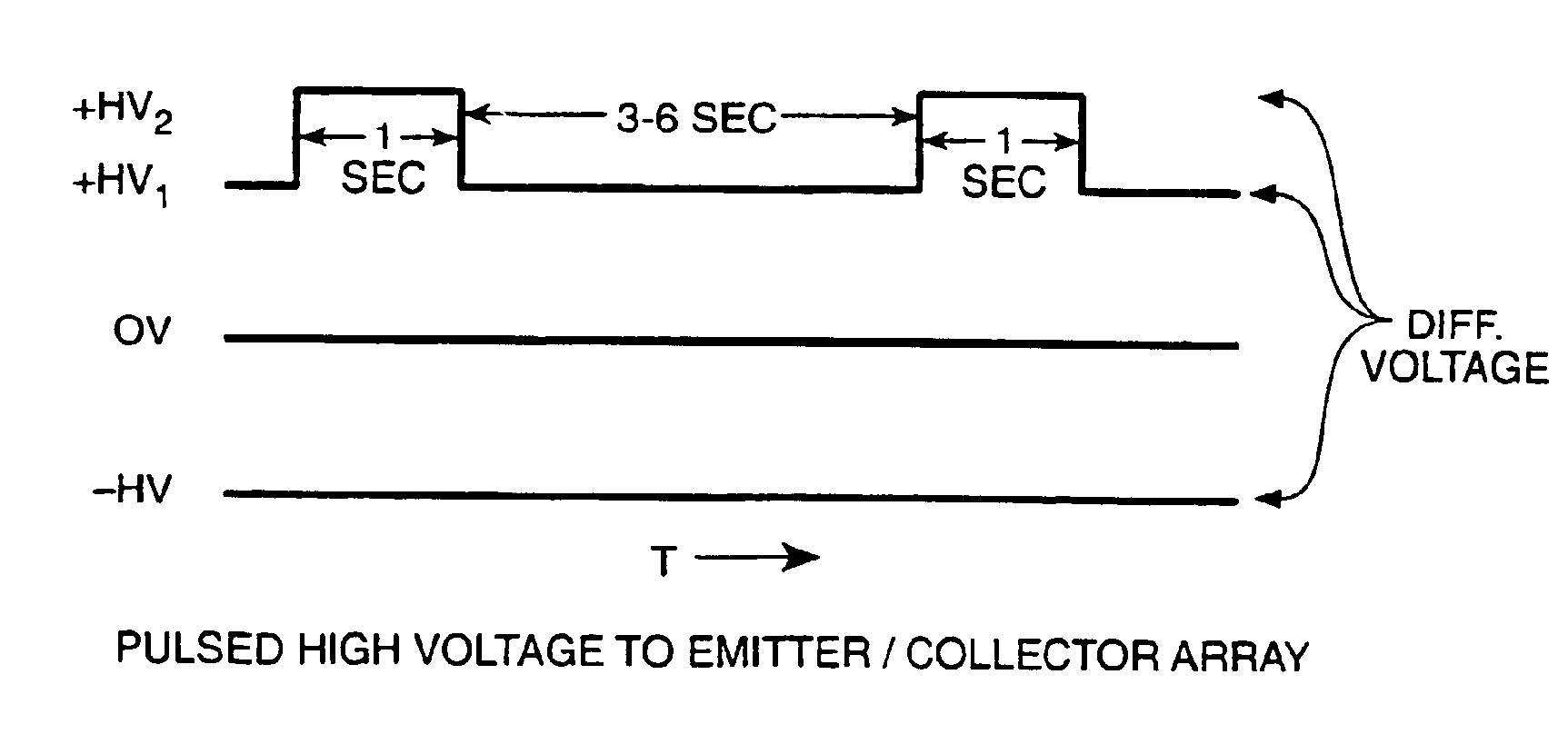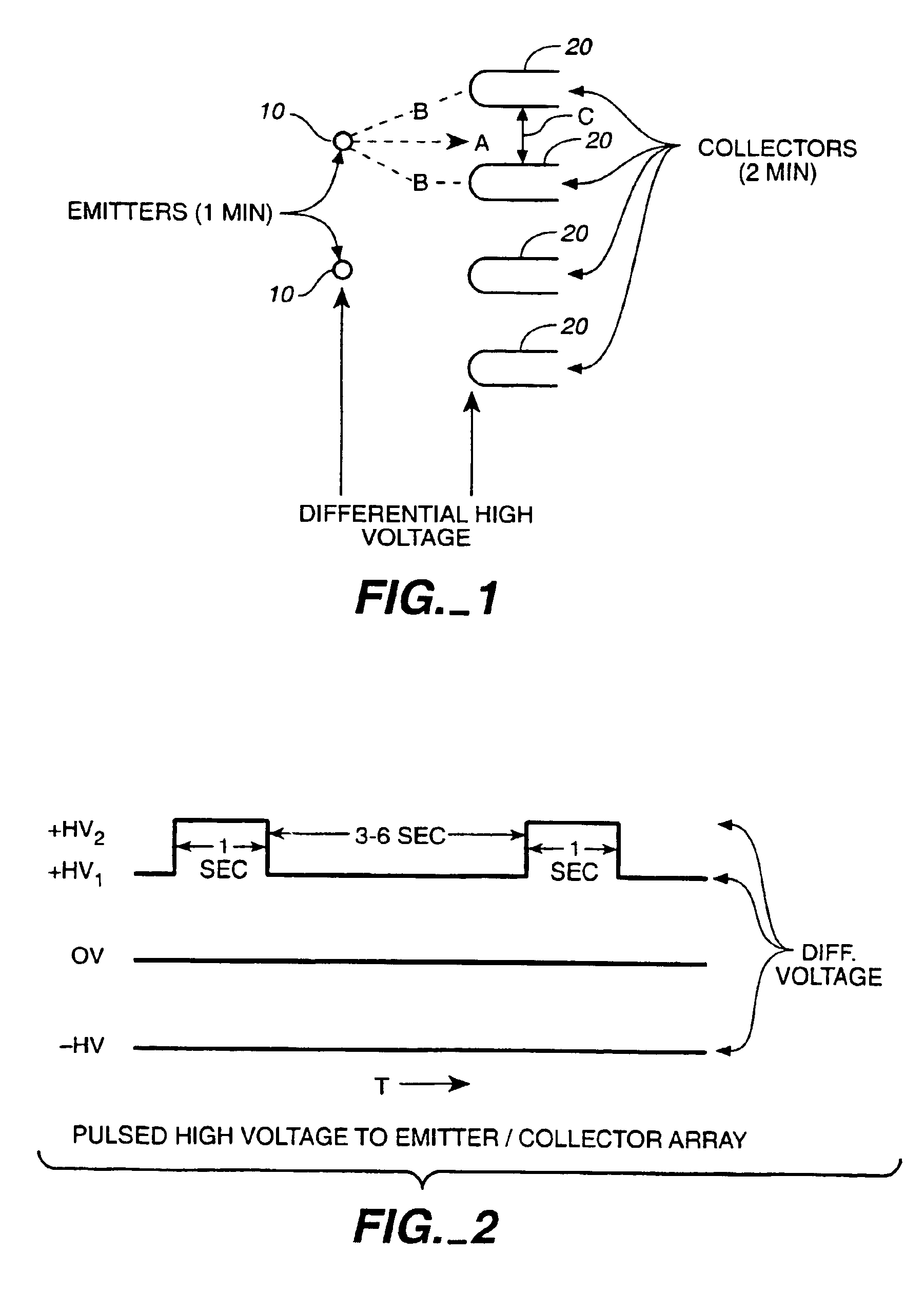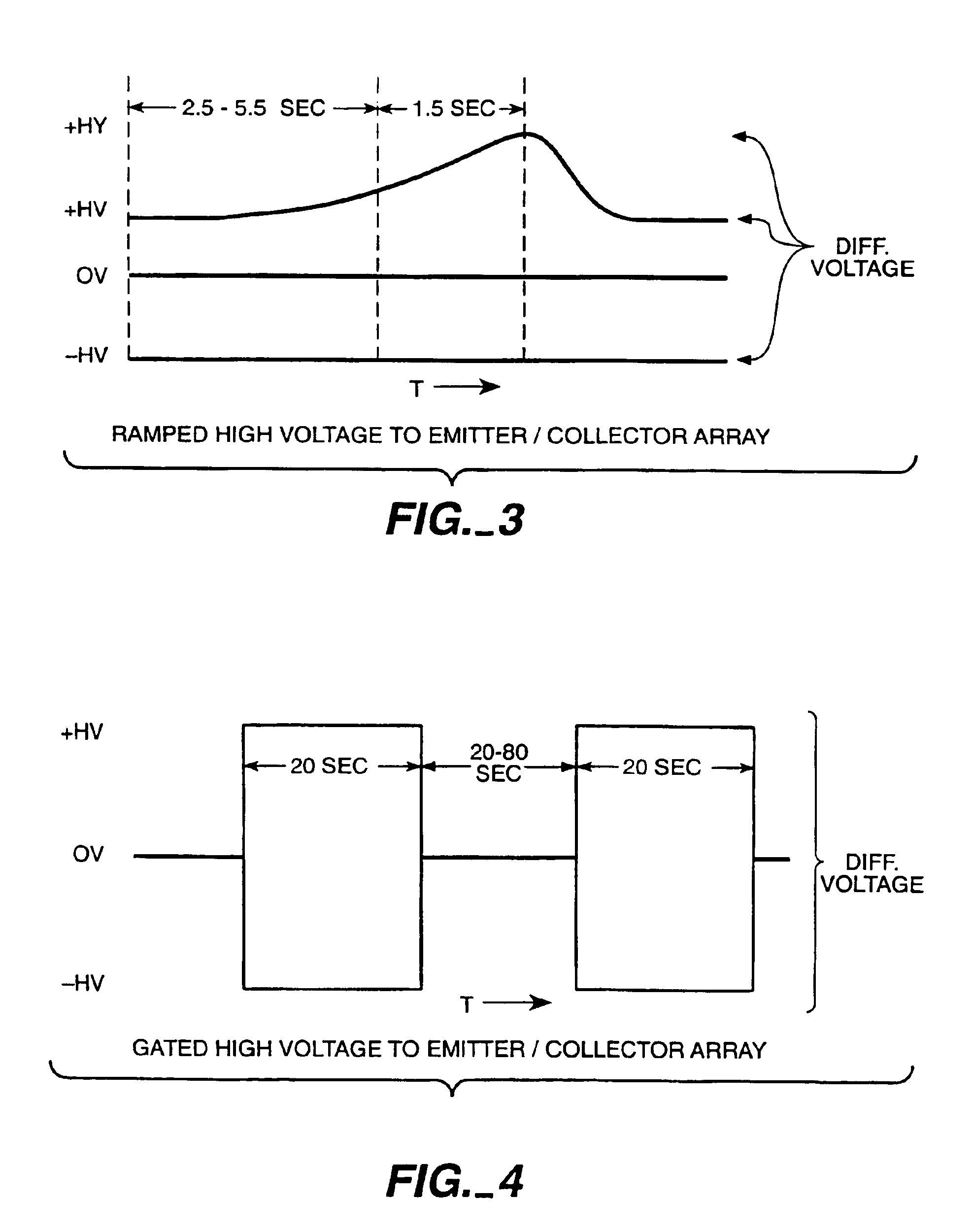Method and apparatus to reduce ozone production in ion wind device
a technology of ion wind and ion generator, which is applied in the direction of lighting and heating equipment, instrumentation, heating types, etc., can solve the problems of indoor airborne ozone concentrations above 50 indoor concentrations of ozone above 100 ppb (parts per billion) being hazardous to humans, so as to improve the perceptible operation of the ion wind device and reduce the airflow
- Summary
- Abstract
- Description
- Claims
- Application Information
AI Technical Summary
Benefits of technology
Problems solved by technology
Method used
Image
Examples
Embodiment Construction
[0014]FIG. 1 refers to a typical ion wind array such as described in Lee U.S. Pat. No. 4,789,801. The emitter or emitters 10 are typically constructed of 0.1 mm pure tungsten wire and may be of any length. The collectors (sometimes referred to as accelerators) 20 are typically constructed of any non corrosive conductive material such as copper, aluminum, stainless steel, or brass. The emitter 10 is always located opposite and at the center (A) of the opening of the collectors 20. The equidistant (B) of the emitter 10 to the leading edge (radius) of the collector20 may vary depending upon desired operational effect, but is typically one inch. This is also true of the spacing (C) between the collectors 20.
[0015]The differential voltage applied across the emitter / collector array must be at least 6,500 volts in order to effect any substantial ion mobility and subsequent airflow. Typical configurations consist of applying a positive high voltage to the emitter 10 and a negative high volt...
PUM
 Login to View More
Login to View More Abstract
Description
Claims
Application Information
 Login to View More
Login to View More - R&D
- Intellectual Property
- Life Sciences
- Materials
- Tech Scout
- Unparalleled Data Quality
- Higher Quality Content
- 60% Fewer Hallucinations
Browse by: Latest US Patents, China's latest patents, Technical Efficacy Thesaurus, Application Domain, Technology Topic, Popular Technical Reports.
© 2025 PatSnap. All rights reserved.Legal|Privacy policy|Modern Slavery Act Transparency Statement|Sitemap|About US| Contact US: help@patsnap.com



